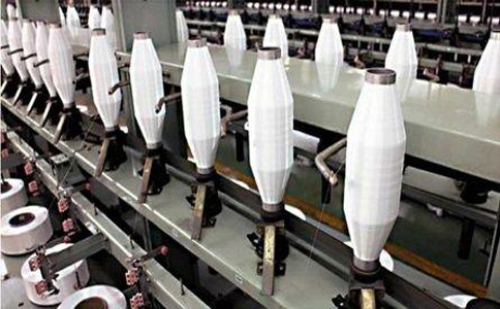2016 China Textile Industry Operation
Guidance: Exports of textiles and garments are vulnerable to trade policies: China's textile and garment exports have benefited from the accession to the WTO in 2000 and the 2005 “Textile and Apparel Agreement†which was completely cancelled and achieved rapid development. From the point of view of China's textile and apparel export structure, textile exports are mainly in Vietnam, Hong Kong, Bangladesh and other regions, mostly upstream raw materials and intermediate goods exports, while major apparel exporting countries are concentrated in the EU, the United States, Japan and other developed countries.

1.1. Operation of China's textile industry in 2016
In 2016, under the complicated global economic downturn and weak market demand, China's textile industry further promoted transformation and upgrading, and actively implemented supply-side structural reforms. The textile industry achieved steady growth throughout the year, the industry’s profitability was stable, and the quality of operations continued to improve. However, the company’s cost burden is still heavy, and the industry is facing greater pressure for development.
Scale efficiency is steadily slowing down
According to data from the National Bureau of Statistics, the industrial added value of enterprises above designated size in the textile industry increased by 4.9% year-on-year in 2016, which was lower than the growth rate of 1.4% in the same period of last year; the income from main operations was RMB 7,330.23 billion, which was an increase of 4.1% over the same period of last year. The year-on-year slowdown was 0.9 percentage points; the total profit realized was 4.0036 billion yuan, an increase of 4.5% year-on-year, and the growth rate was 0.9 percentage points slower than the same period of last year; the fixed assets investment completed amount was 1,283.87 billion yuan, an increase of 7.8% over the same period of last year. Year-on-year decrease of 7.2 percentage points.
Market pressure is more prominent
In 2016, retail sales of garments, hats, caps, and needles above designated size in China only grew by 7% year-on-year, a 2.8% decrease from the same period of last year; the retail sales of online wearable goods nationwide increased by 18.1% year-on-year and 3.3% year-on-year. In the year, textile and apparel exports totaled 270.12 billion U.S. dollars, a year-on-year decrease of 7.2%, and a 2.4 percentage point drop from the same period last year.
Industry quality is steady and good
In 2016, the profit margin of textile enterprises above designated size was 5.5%, and the total asset turnover rate was 1.6 times/year, both of which were at the same level as the previous year; the finished product turnover rate was 21.98 times/year, which was 1.2% faster than the same period of last year; The proportion was 6.1%, a decrease of 0.1% from the same period of last year.
Progress in transformation and upgrading
In 2016, the industrial textile industry's industrial added value and total profit increased by 9.1% and 8.3% year-on-year, respectively, and the sales margin was 6.2%, both significantly higher than the industry average, and continued to play a role in the growth of the industry chain.
The quality improvement and brand building work in the apparel and home textile industries achieved results. The annual sales profit ratios were 5.8% and 6.2% respectively, which was better than the industry-wide level.
1.2. Analysis of China's Textile Industry Policy and Trade Environment in 2016
Exports of textiles and garments are vulnerable to trade policies: China's textile and garment exports have benefited from the complete cancellation of the accession to the WTO in 2000 and the 2005 Agreement on Textiles and Clothing, and achieved rapid development.
From the point of view of China's textile and apparel export structure, textile exports are mainly in Vietnam, Hong Kong, Bangladesh and other regions, mostly upstream raw materials and intermediate goods exports, while major apparel exporting countries are concentrated in the EU, the United States, Japan and other developed countries.
The increase in international political risks will also affect the trade environment and trade volume. For example, under the multiple factors of the Ukrainian crisis, Western economic sanctions, and the decline in international oil prices, the Russian economy will experience a decline, and its use as a major fur garment demand country will cause the export of fur garments in China to be affected. spread.
The international trade environment is complicated and export pressures increase
International political risks increased and international trade was affected: After Brexit came to the United States, the new US president took office, and leaders from Italy and South Korea changed, the TPP is basically hopeless to bring some positive benefits: TPP will increase the export competitiveness of Vietnam, a new textile spinning country, but with The new president of the United States and the Vietnamese side respectively made it clear that they would stop promoting the TPP. The unfavorable factors for our country will be weakened.
In November 2016, the new President of the United States, Trump, won the election and had advocated anti-trade policy. After its official inauguration in 2017, trade protectionism or its rise took off.
In December 2016, the Ministry of Finance of Japan decided to re-examine the conditions of the target country of the preferential tariff system and prepare to cancel the treatment of “special tariff system†enjoyed by China and other countries, and complete the revision in 2019. After the implementation of the New Deal, China's import tariffs on textiles and raw materials originating in China will be 1.06-14.2 percentage points higher than those of Vietnam, Indonesia, Bangladesh and Cambodia.
Report details page: http://service.made-in-china.com/market-analysis/industry-analysis-report/727484.html
More reports: http://service.made-in-china.com/market-analysis/industry-analysis-report-1.html
Men'S Casual Leather Shoes,Men'S Casual Shoes,Casual Shoes,Comfortable Men Casual Shoes
Guangdong XDDD Footwear Crop. Ltd , https://www.xdshoe.com